Approaches to learning and development (L&D) are constantly evolving in keeping with evolving tools and expectations. Although before the events of this year, educators and knowledge professionals arguably, at least felt more able to control, influence and grow with the changes. 94% of L&D professionals have recently reported they have had to change their L&D strategy in response to the COVID-19 pandemic, and another 59% thought their organisation’s adoption of digital learning was immature given the developments. L&D have had some advantages in their court for a while; technological tools and platforms opened up doors for sharing information immediately and internationally, for creating more dynamic materials, and for creating different paths for learners to follow that suit their own personal approaches and needs.
But L&D spans a huge area and depending on your focus you’ll no doubt be facing a myriad of different yet equally complex challenges today. Perhaps the biggest shared one though, being how to engage your audience. An audience who you now predominantly have to access via a screen. The pressure is on to keep materials relevant and interesting yet easy to digest, that learners can take away with them and apply in their everyday lives once they shut their laptops.
For a while, people responsible for L&D have needed to get even more creative in how they reach their audiences, who are becoming even more overwhelmed, distracted, and unfulfilled in their relationship with learning. Gen Z smartphone users unlock their devices on average 79 times a day. Office workers are interrupted every 11 minutes. Only 26% of employees strongly agree they learn or do something interesting each day. But, actually, it would be wrong to regard these as hinderances to the learning process. Gen Z may be untethered and online, but they are also an incredibly passionate and aware generation. Office workers may be short on time, but bite sized learning is proven to lead to 20% better knowledge retention. The circumstances of the last few months, although initially a shock, could now be the call to action for schools, organisations, and companies to enhance their offering – whether for the remote student, remote employee or apprentice – in order to appeal to what the modern learner is looking to attain from the experience. We are all looking at opportunities to react in order to pull audiences back in, nurture commitment to courses, and improve learning transfer rates.
Join us over the next few weeks as we take a closer look at the current state of education, learning and development, understanding recent experiences and assessing new approaches across 3 distinct areas: classroom based learning, higher education, and workplace development.


